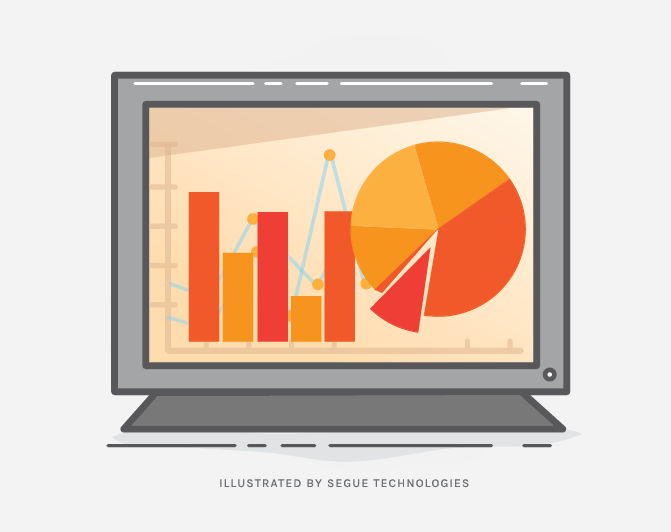When you’ve decided to make your site responsive, it’s time to make some important decisions about how to implement your responsive design. While there may be some urge to just throw some mood boards at your designers and ask for an update when they are done, there is quite a bit of work in a responsive site design that doesn’t involve graphics, colors, and fonts. Three big decision-making areas that need attention during a responsive website rollout include prioritization, content, and impact. Also, it is not the time to pull out your crystal ball to make these decisions. Coin tosses, dart throwing, and trusting your gut are also less-than-stellar guides for making complex decisions. You have data, so use it! Make informed decisions throughout the responsive design process using the web analytics data right from your existing website.

If for some reason you don’t have analytics set up on your existing site, do it now! We tend to use Google Analytics for most projects, but feel free to pick the option that best suits your needs. You only need a few weeks of data to get a clear picture of how visitors are using your site.
Prioritization
Your redevelopment budget is probably not unlimited. You’re going to have to make some tough decisions about what is and is not included in your responsive site. By combining the goal of your responsive design project with analytics data, you can identify high leverage points to generate the greatest value for your project stakeholders.
Normally, a significant goal of a responsive redevelopment project is to make the site more usable for those on mobile devices. By filtering your analytics data to show only mobile devices, you can get a clearer picture of how mobile users are trying to use your existing site. In addition, you can see numbers of device types and browsers, which can determine priority levels for addressing cross browser/device compatibility issues and discrepancies. Whether you are rolling out the responsive site in phases or doing it all at once, working on these frequently-accessed portions of your site first will generate the most value early on in the project.
Content
While one major goal of a responsive design is to make content look good on any device, it will not magically organize all of your content in a meaningful manner for everyone who visits your site. The content on your site will be broken down into smaller, more atomic units as a part of the responsive design process. Breaking these content elements down means you will also have to adjust the site’s navigation so that users can find the content they are looking for.
Use analytics to determine what pieces of content your mobile, desktop, and other user types are seeking. Pay special attention to the analytics data for how much time site visitors spent on the page combined with the last page the user visits in a session to determine what the user was most interested in. Also, keep in mind external, generalized analytics about users on different platforms when making decisions. For example, because users on mobile devices are twice as likely to share content over social media than those on desktop devices, you may want to make your social media links are easier to access on smaller screens, than on larger screens.
Impact
How are you defining success for your responsive design? As awesome as your site is going to look when you’re done, something more measurable than “coolness factor” will be useful in proving the value of the project to those with less aesthetic interests. Comparing site analytics before and after the responsive implementation will prove that you have made gains in user engagement and social media presence.
So remember, use data to inform your decisions about your responsive redesign. Save your magic 8-ball for making decisions about lunch.